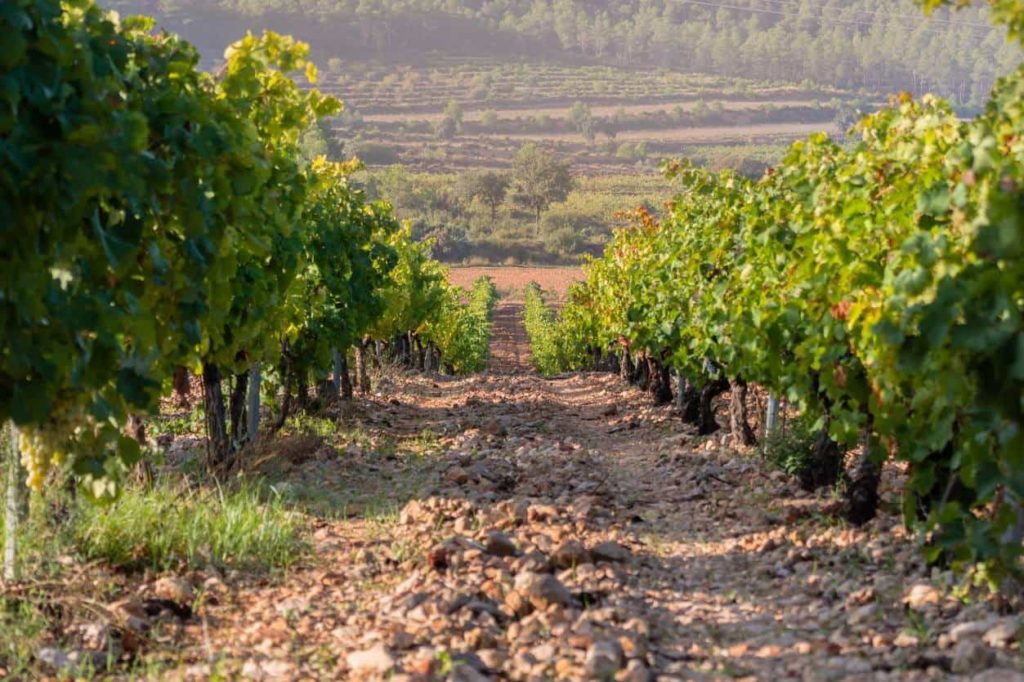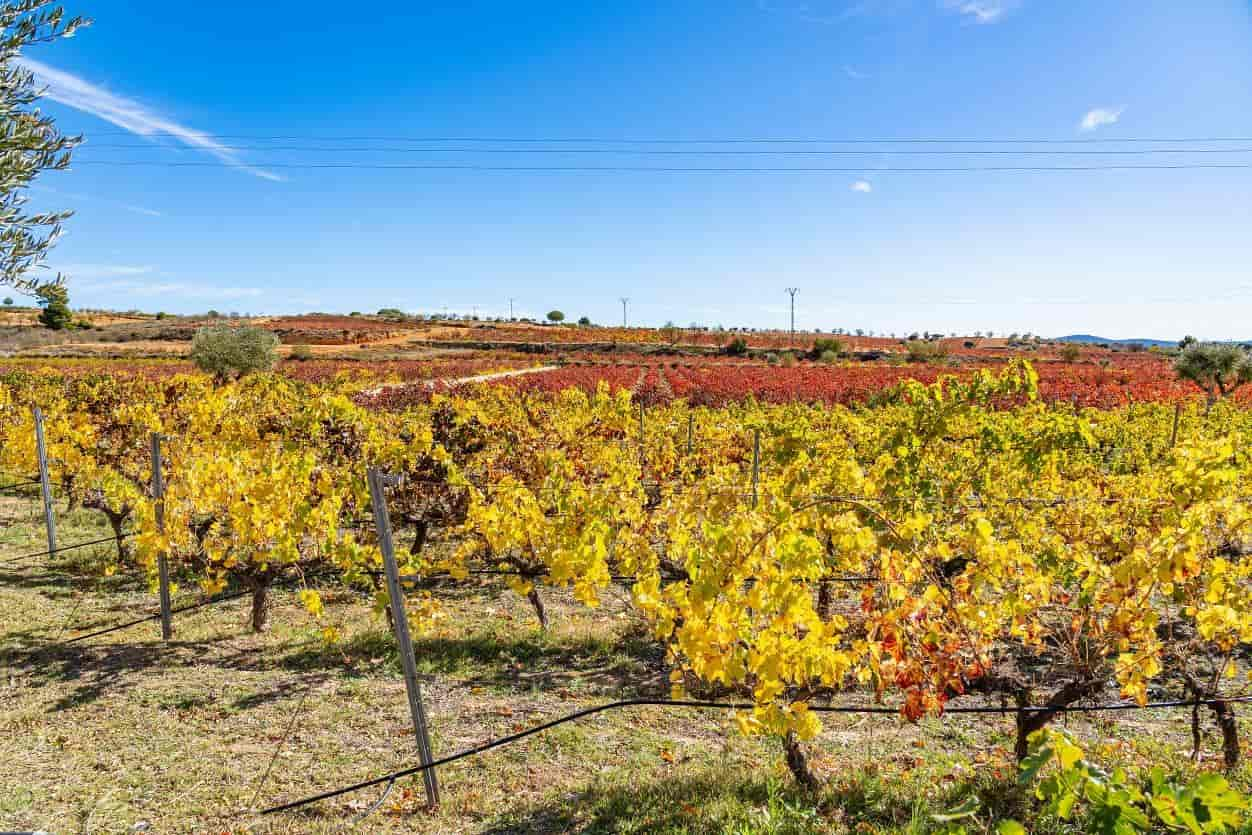
An overview of Spanish wine regions: Valencia

Valencia is located on the eastern Mediterranean coast of Spain, about two hours south of Barcelona. The vineyards in this administrative region of eastern Spain cover an extraordinary range of climates and terroirs, from the limestone-rich soils of the Manchuela plateau to the coastal sites found between Denia and Calpe in Alicante. Remnants of past civilisations are everywhere: Mudejar churches and the great cathedrals of Valencia to explore. Meanwhile, historical evidence points to a winegrowing culture that has endured for over a thousand years. Indeed, the vineyards inland from Spain’s central Mediterranean coast were established on the global map long before Rías Baixas, and Ribera del Duero rose to prominence.
However, the Valencia wine region did not historically stake its reputation on quality. Endless hours of warm sunshine and extensive irrigation systems were conducive to producing alcoholic, bulk wine. However, as international competition intensified and demand faltered, Valencia’s growers embraced a more sustainable business model that coalesces around premium wine production. The best examples can compete alongside Spain’s more prestigious reds.
Click on a link to jump to that section:
Winemaking appellations in Valencia
Valencia DO
Spain’s third-largest city gave its name to an expansive wine region, awarded DO (appellation) status in 1957. It is divided into four key areas: the vineyards of Clariano are located to the southwest of the regional capital, while the vineyards of Alto Turia are found to the northeast of Valencia city; vineyards of Lower Turia Valley sit at a slightly lower elevation. Finally, to the east of the Turia valley is the Valentino subregion.
- Clariano is 65km Southwest of Valencia. The climate here produces meaty Spanish red wine from Tempranillo, Cabernet Sauvignon and Merlot.
- Alto Turia (despite the arid conditions) is blessed with a relatively cool climate due to an elevation of 1200 metres in some places. Exploiting all the benefits of diurnal temperature variation, local growers craft some surprisingly fresh and elegant whites, often based on the Merseguera and Viura grape varieties.
- Lower Turia Valley, meanwhile, contain great swathes of vineyards planted to Moscatel de Alejandra – some of Spain’s leading dessert wines are made in the river valley: unctuous and concentrated. However, thanks to the Mediterranean’s cooling influence, they are balanced by fine acidity.
- Valentino is one of Spain’s more obscure vineyards. Yet global anonymity has not prevented an influx of investment into the region. Chardonnay and Semillon are increasingly sharing the landscape with indigenous Spanish grapes such as Viura. As elsewhere, a range of wine styles are made in Valentino, ranging from delectable rosé to pungent and spicy reds: Grenache, Monastrell and Cabernet Sauvignon blends are far greater than the sum of their parts. A small volume of Cava is also produced in Valencia.

Utiel-Requena DO
Utiel-Requena has been changing Since the late 1990s, with a realignment towards premium winemaking. Situated to the west of Valencia city, the Spanish wine region has caught the attention of sommeliers and aficionados. They’re increasingly drawn to the charms of Bobal, Spain’s most-planted red grape variety after Tempranillo. When Bobal is cultivated on high-elevation sites (specific vineyard sites rise to 900 metres above sea level), the grape can yield the most graceful and soft red wine, occasionally blended with Tempranillo or Cabernet Sauvignon.
A handful of growers in the south-eastern region even produce a small volume of sparkling wine, often based on the traditional Cava recipe: a blend of Macabeo (Viura), Parellada and Xarello. But with over 33,000 hectares under vine, there is no shortage of wine diversity across the Utiel-Requena plateau.
Alicante DO
Alicante, once a source of sticky dessert wines based on Moscatel de Alejandra, has diversified its offer. The legendary Artadi family of La Rioja were among those attracted to the potential of south-eastern Spain, establishing El Seque in 1999. Today, Moscatel de Alejandra, Bobal, Cabernet Sauvignon, Merlot, Grenache, and Tempranillo are cultivated in two distinct sub-regions.
The region known as La Marina encompasses the land between Denia and Calpe, to the northeast of Alicante. The climate is Mediterranean, characterised by hot summers and scant summer rainfall. Red varieties, particularly Cabernet Sauvignon and Monastrell, thrive here. Indeed, voluptuous and concentrated red wines are becoming an Alicante trademark. Yet the best examples from La Marina are fresh, as winemakers seek cooler sites at higher altitudes. A small amount of dry white is also made, occasionally based on Chardonnay and Sauvignon Blanc, but is the antithesis of fresh and crisp New Zealand Marlborough.
West of Alicante, meanwhile, are the vineyards of Vinalopo, situated between the town of Villena and Pinoso. Only hardy varieties, such as Monastrell, can tolerate the arid conditions, with rainfall averaging 300mm per year. It is used to produce both exceptional red wines and a surprising volume of aromatic rosé. A local speciality of the region is Fondillon fortified wine, a Monastrell-based answer to Oloroso Sherry – delicious with Manchego cheese.
IGP appellations
- Castellón IGP – the fourth largest city in the province of Valencia is a hidden architectural gem. It is also a fantastic base for exploring local vineyards to the north of the region. Mirroring the rest of eastern Spain, international varieties are found alongside indigenous grapes such as Bobal and Merseguera.
- El Terrerazo IGP – a promising enclave is located within the boundaries of Utiel-Requena. Spanish sommeliers are rediscovering it due to the number of old Monastrell bush vines. Some of the region’s leading Vino de Pagos (single-estate wines) are based on fruit grown at elevations that rise to 900 metres.
Key grape varieties
Red grapes
- Monastrell – known as Mourvedre, is the noble red grape of Bandol and is increasingly used to make excellent red wine in the dramatic scenery of eastern Spain. Just a few hours southwest, this variety dominates the vineyards of Jumilla
- Garnacha – Grenache Noir yields very powerful red wines on the poor, infertile soils of the Spanish Meseta. Ripe and concentrated berries offer richness, alcohol and perfume.

- Tempranillo – full-bodied and super ripe wines from Tempranillo are all too common in the arid climate of eastern Spain. However, the best examples balance force with finesse.
- Cabernet Sauvignon – in eastern Spain, the aromatic and rich Cabernet Sauvignon are reminiscent of Californian styles. As in Bordeaux, it is often blended with other grape varieties.
- Merlot – traditionally blended with Cabernet Sauvignon, Merlot yields plump and rich wine in Valencia, with silky smooth tannins.
White grapes
- Moscatel de Alejandra – The oval berries of Muscat de Alexandria yield delicious sweet wine, brimming with honeysuckle and orange peel aromas.
- Merseguera – an obscure white grape native to eastern Spain, Merseguera can produce an exceptionally fresh and racy dry white wine with notes of citrus and apricot. However, it needs a superior site, and yield must be kept low.
- Malvasia – used to make both sweet and dry styles in Valencia and a small volume of Demi-Sec Cava.
- Chardonnay – at higher elevations, Chardonnay can succeed in this dry and hot climate. Nevertheless, Valencian Chardonnay is full-bodied, buttery and opulent.
Enjoying Valencian wine
Valencia is a region that offers the best of everything, from the traditional sweet wines of Moscatel de Alejandra to the Merseguera whites of Bodegas Mustiguillo. You’ll find both delicacy and weight in Valencia. The Mediterranean cuisine of the east coast is also enriched by diversity – centuries of Roman and Moorish influence have gifted Valencian chefs with many quality ingredients, including some of the finest saffron in Europe. The wise choice, as ever, is to match regional local food with local wine. Our top choice is Monastrell with cochifrito, a simple dish of lamb fried with lemon, garlic and paprika. Valencian paella or tapas will more than suffice.
What to read next
An insight into Spanish wine regions: Rioja
An insight into Spanish wine regions: Ribera del Duero
An insight into Spanihs wine regions: Penedès
An insight into Spanish wine production: Cava sparkling wine
An insight into Spanish wine production: Sherry fortified wine




